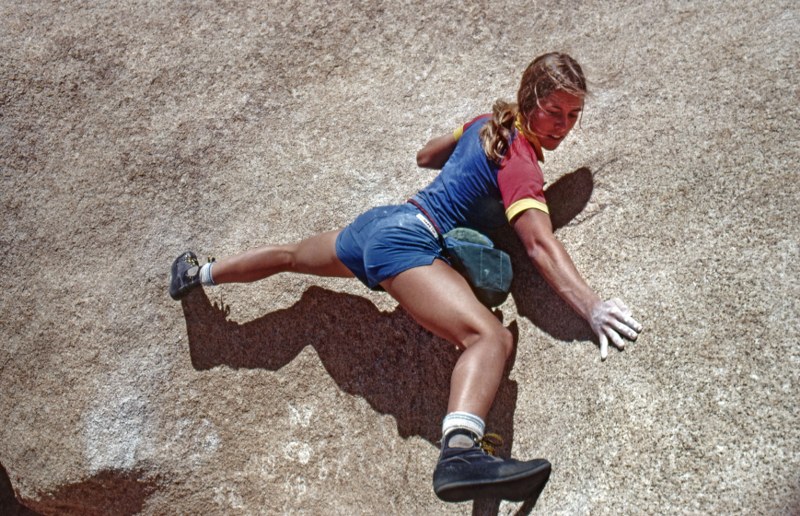There is rock
climbing and climbers of all kinds. Some use ropes, so don't,
some climb 3,000 feet off the ground, some climb 10 feet.
Though it seems like each climber is completely different, they all use the same physics. A boulderer and a big wall climber will both rely on friction. The friction between a climbers shoes and the rock, as well as between their hands and the rock allows a climber to seemingly stand up on nothing. A climber will often push down on their feet and hands.
However, with gravity, a climber will fall if they cannot hold on or they slip. Climber have come up with all kinds of methods to avoid harm or death when this happens. A person climbing without a rope may have a soft pad to land on, and a person climbing something big may chose to use a rope.
A rope is designed to with stand a great deal of force. Climbing ropes are dynamic, which allows a climber to fall without fear of being stopped suddenly and hurting themselves. Ropes and other climbing gear is discussed further in the "Gear" section.
Though it seems like each climber is completely different, they all use the same physics. A boulderer and a big wall climber will both rely on friction. The friction between a climbers shoes and the rock, as well as between their hands and the rock allows a climber to seemingly stand up on nothing. A climber will often push down on their feet and hands.
However, with gravity, a climber will fall if they cannot hold on or they slip. Climber have come up with all kinds of methods to avoid harm or death when this happens. A person climbing without a rope may have a soft pad to land on, and a person climbing something big may chose to use a rope.
A rope is designed to with stand a great deal of force. Climbing ropes are dynamic, which allows a climber to fall without fear of being stopped suddenly and hurting themselves. Ropes and other climbing gear is discussed further in the "Gear" section.
Lynn Hill, first person to climb The Nose (5.13+) on El Capitan in Yosemite, using friction to climb a slab. http://www.gq.com/story/stonemasters-rock-climbing-oral-history/amp
